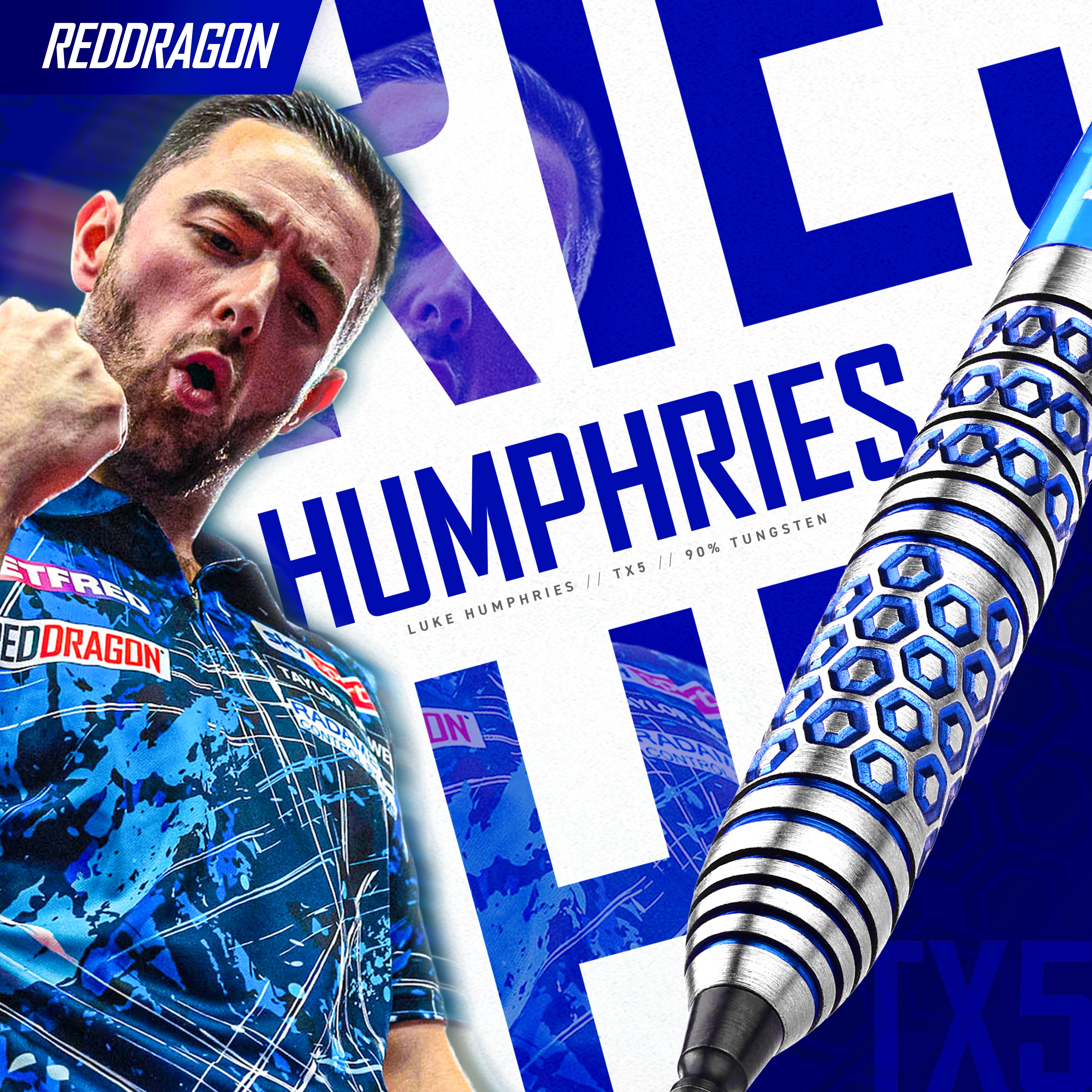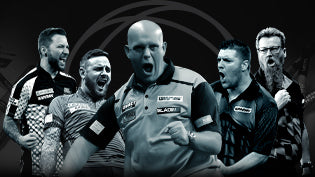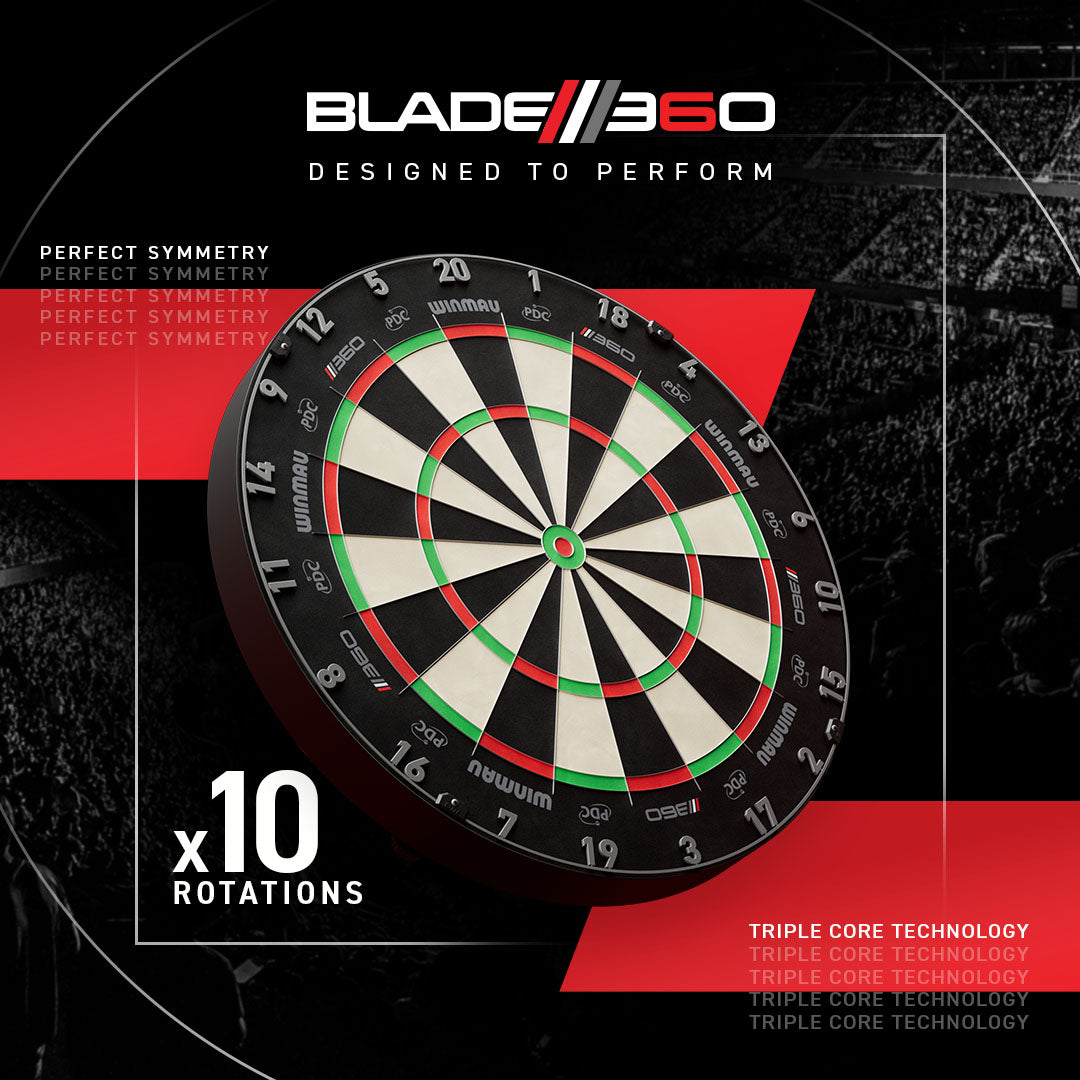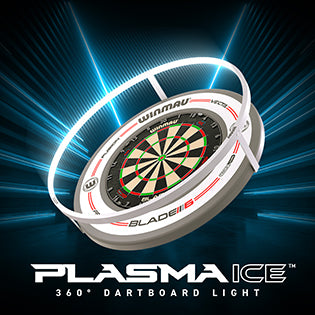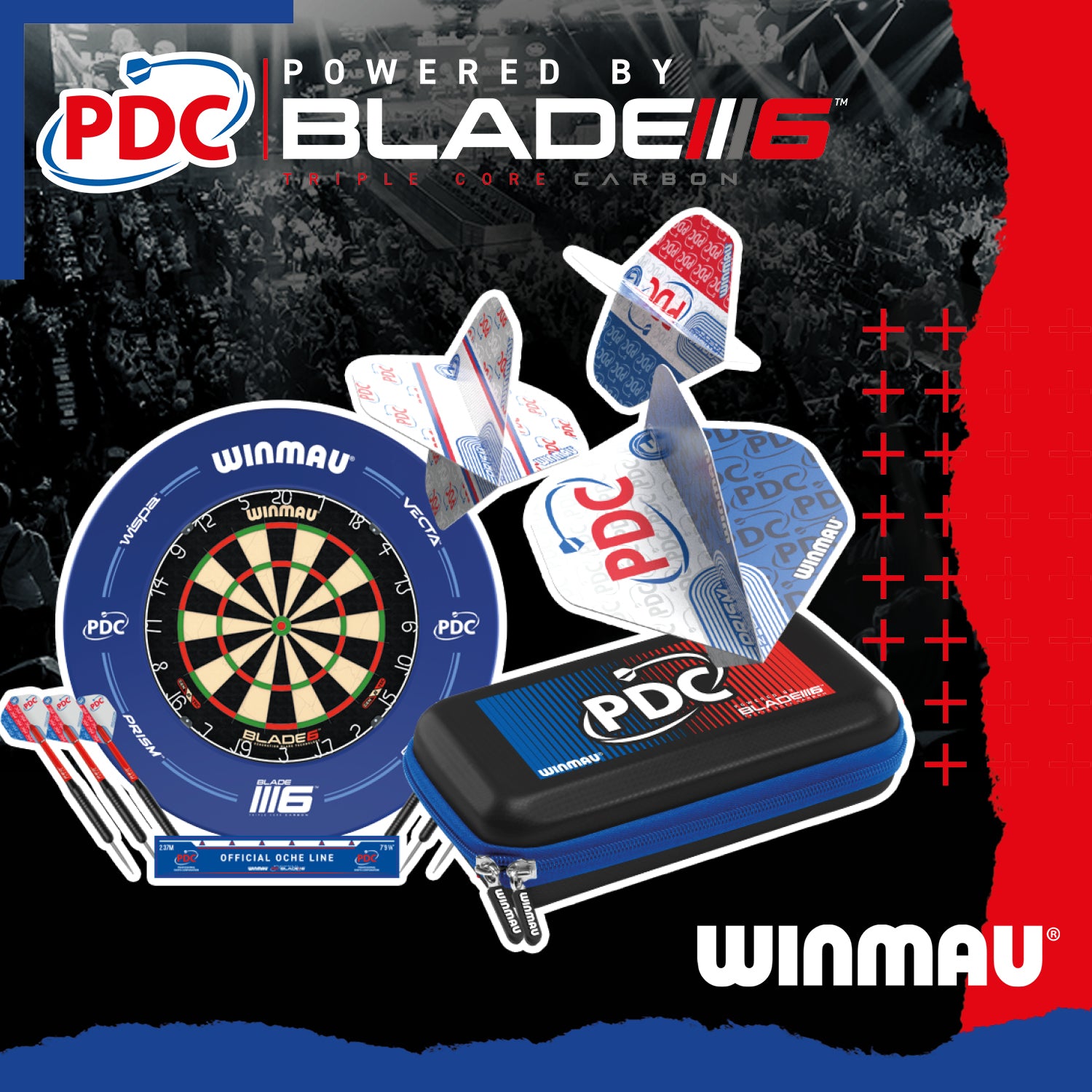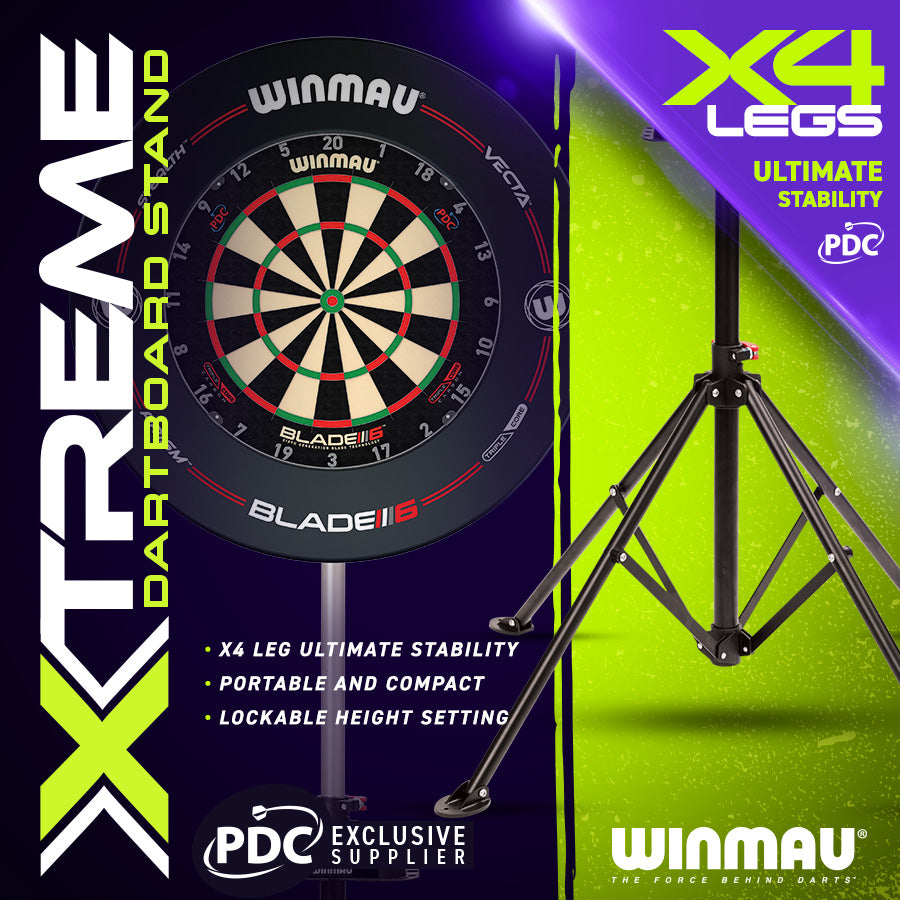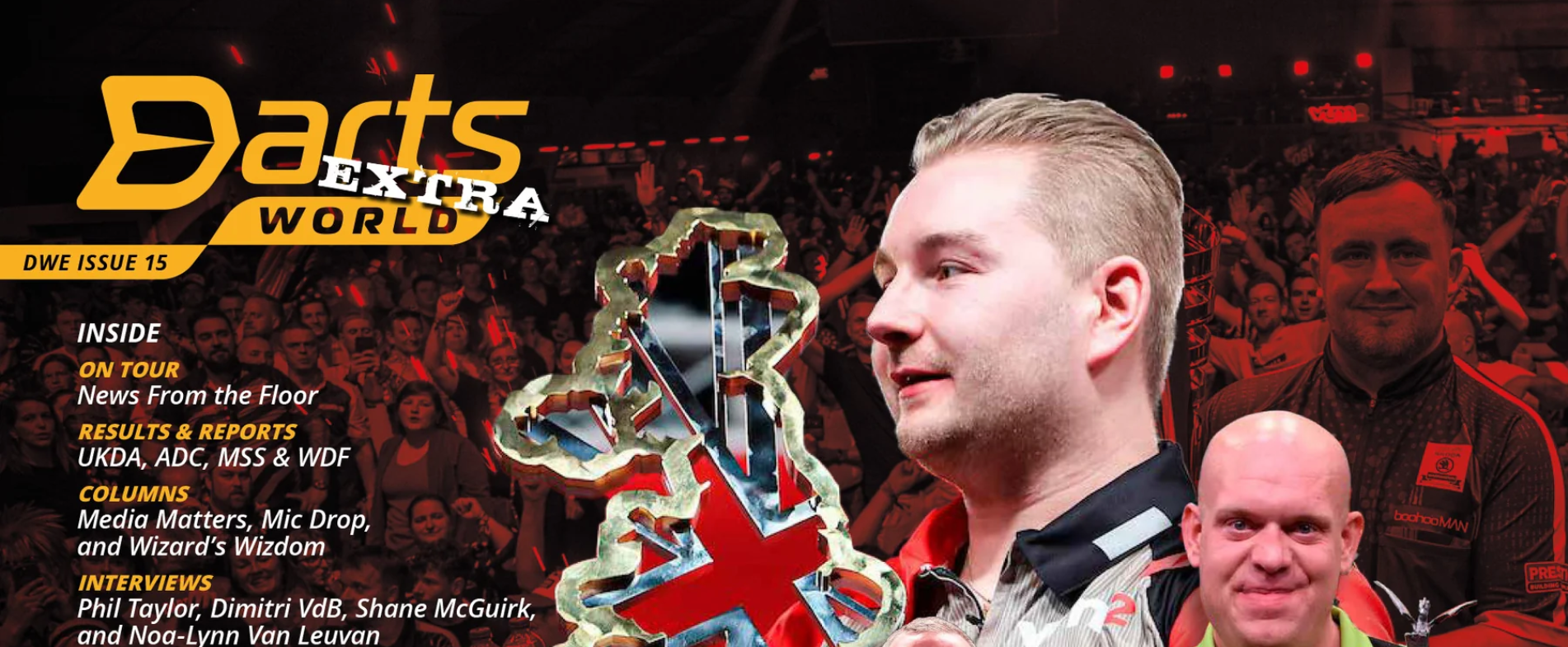
DR DARTS NEWSLETTER - PATRICK CHAPLIN - MARCH'24 EDITION
DARTS HISTORY
(aka Dr. Darts’ Newsletter) 

Issue 168 www.patrickchaplin.com March 2024
DARTS AND BROADCASTING
THE EARLY YEARS – (2) TELEVISION

Before I reveal the history of darts on TV, I must make a minor correction to the text on radio/wireless that was featured in #165.
Thanks to Ed Helenius from Brooklyn, NY, who wrote
Hi Patrick. I just finished reading your latest issue of Darts History. The history of darts on the radio was fascinating and I look forward to next month’s installment about darts on TV.
I would like to point out a minor error: in the first sentence of paragraph 3, “British Broadcasting Corporation” should read “British Broadcasting Company.”
Ed is right. When the B.B.C. was founded on 18th October 1922, the initials stood for British Broadcasting Company until 31st December 1924. A liquidation sale was held and in 1927 the B.B.C. was re-established as a non-commercial, crown-chartered, identity, the British Broadcasting Corporation. Thanks Ed.
Question - Do you know when darts was first broadcast in the UK?
1960s? Early 1970s?
Wrong on both counts I’m afraid.
According to the BBC Handbook 1938, television in Britain had been introduced by the BBC in August 1936, transmitting test programmes from its London Television Station at Alexandra Palace until its formal launch on 2 November. However, this ‘public service’
reached only a handful of rich households in the London area. Surprisingly, darts was included on these limited early television schedules.
At 9.25 p.m., on Saturday 29 May 1937, the BBC ‘London Television’ broadcast the first televised darts programme from Alexandra Palace. Entitled ‘Darts and Shove Ha’penny’ the programme was mentioned in the Radio Times (Television Supplement) on 21st May 1937 and featured a ‘competition between two rival teams of two well-known hostelries.’

On 5 February 1938, The Times revealed that the BBC would televise darts once more. This time, it was a commentary by Charles Garner of the National Darts Association (NDA), (pictured, left, calling a game in June 1938) on a match between the News of the World champions and a BBC team. While the News of the World team, undoubtedly captained by the legendary Jim Pike, can be guessed, research, thus far, has not identified the members of the BBC Team. On 30 April a match between another unidentified ‘BBC Four’ playing a team from the Press Club was televised, again with Garner’s commentary, with a return match being broadcast on 13 January 1939.
The BBC televised the first ‘local derby’ on 15 October 1938 between teams from Islington and Lambeth and a darts match between two teams of four featured again on 22 July 1939.

Given the novelty status of the game amongst those most likely to be viewing - those most able to afford a television set – that is the upper classes and maybe the rising middle classes, it is clear to me that the BBC believed darts was of sufficient interest to warrant inclusion in the schedule of programmes.
(The photo, right, features the St. Dunstan Four and G. H. Allen the St. Dunstan’s Darts Organiser – fourth from left with glasses.)
When considering broadcasting our sport the B.B.C. would have been aware of the comparative technological simplicity of broadcasting darts and that darts was an indoor game, so never to be affected by the weather.
Photographic evidence of the televising of darts in the 1930s/1940s is rare but this darts match held on Saturday 7th September 1946 between the St. Dunstan Four and the Royal Eye Hospital Four and, also see photo on Page 1. © Both my copyright.)
The photo shows a match in progress at the Alexandra Palace Television Studios. It shows that two cameras were required, ‘one trained on the player as he throws, and the other on the board,’ with a minimum number of sound and lighting technicians and a commentator in attendance.
Frank Wolfe, editor of The Dart announced in his editorial on 14th September 1946:
I was privileged to watch the televising, and the preliminaries that preceded, a match between The St. Dunstan Four and The Royal Eye Hospital (Southwark) team recently. Fitting, that the teams chosen for this unique test should both be working for the benefit of organisations whose interest is in the welfare of those with impaired or lost sight.
Frank then described the preliminaries which he believed would be of interest to his readers and, of course, for us today, which stands as a unique record of this early televised darts challenge. Frank wrote
The teams had a few practice throws while the cameramen focused their cameras, finding their best positions so that viewers would be able to follow the game.
[Of course, this was many, many years before the advent of the split-screen technology.]
Two cameras were used for the match. One photographing the thrower was switched into use for the first dart thrown and the other, trained on the board, came in as the second and third darts arrived at the board. When a man was on a shot, the board was in view the whole time.
For the players present it was a unique experience, during which they were able to take their throw and then walk across the studio to watch, on a television set, their team mates perform.
Frank Wolfe told his readers

I watched part of the match on a set in the studio and part in the viewing room, a miniature picture palace [cinema] where viewers watched the programmes on a large screen.
As for the match itself, the team members for The St. Dunstan Four (back row, left), ‘their usual team,’ comprised left to right, Joe Hitchcock, Syd Howes, Bill Hughes, and Bill Jacobs whilst The Eye Hospital Four were (front row, left to right were G. Booker, E. Legg, J. Griffen, and W. Rossiter. The Dart reported:
The match was the best two of three legs, 1,001 up. The St. Dunstan Four won the first two and as there was still some time left the third game was played and this was also won by the St. Dunstan’s team.
The only scores of note in the first leg were both by Bill Hughes. His 103, the highest of the match, was made when trying to finish on 106. He left three to split and it went to Howes to make game shot.
The second and third legs were played in front of the television cameras and each player made several good scores. Legg’s first two throws were 85 and 81, Griffen made 85. For the St. Dunstan Four, Hughes scored a ton and Jacobs got 99 to leave 28. Hitchcock, whose previous three throws produced 85, 83 and 60, got out with his third dart.
Legg and Booker recorded tons in the third game but the St. Dunstan Four kept about level until Hitchcock threw 99 to leave 40 when the Eye Hospital team wanted 114. It went round to Hitchcock, on double seven.
Although the Eye Hospital Team failed to win a match against the St. Dunstan Four on the day, it was clear that the Eye team had the skills to give them a good game. Before the match on television taking on the St. Dunstan Four, they had only lost two matches in the previous six months as they travelled round raising funds for the Eye Hospital. Any team wishing to take them on was encouraged to contact Mr. G. Booker ‘to arrange matches anywhere.’
As for the future of darts on television, Frank Wolfe stated
Several viewers tell me that they thoroughly enjoyed the match and are looking forward to more of them… “The Dart” has been pressing for the broadcasting of matches since last winter, in letters and interviews with the B.B.C. I have found this corporation most interested and I am sure that this match will not be the last to be seen by those lucky enough to have a television set.
NEXT MONTH – Darts on television 1950 to 1978
ELKADART AND TUNGSTEN DARTS - AND TOM BARRETT - FEEDBACK
My leading article last month certainly gave readers some food for thought. Brian H. wrote
Morning Patrick…Thanks for another great read. The Elkadart story was fascinating; always amazes me how these businesses grow from one man (or woman!) tinkering.
The mention of Tom Barrett's pure tungstens reminded me of something in his book that has always puzzled me. He mentions having two sets: one pure tungsten, the other brass & tungsten, both the same dimensions. He described the tungstens as "extremely heavy", too heavy to be used by most players with success. I've always wondered how heavy that set was. If the same dimensions as the brass/tungstens or even his original Unicorn 27g brass ones (!) they must have been HEAVY! (Flicking through the book trying to find the description of the darts put me in the mood to read it again, so thanks for that!).
As always, looking forward to your next offering.
In Chapter Eight, page 68 of his book Darts (Pan Books, 1973) Tom wrote:

I feel I should end this chapter with a few words about the darts I use. People sometimes come up to me and say: ‘Your darts don’t look like the Tom Barrett darts that are sold in the shops.’ That is true, but easily explained. The Tom Barrett darts which are marketed are identical with the darts I used in winning my 1964 News of the World title. However, I have since experimented, mainly with two types of dart which, while the same size, are made of different material. One set has an extremely heavy barrel of tungsten steel. They would not be a commercial prospect because a set cost more than £12 to produce. Furthermore, they are far too heavy for the majority of darts players to throw with success. I started to use them to overcome the affects of draughts (the breezes, not the beers) in pubs and, more especially, in large halls at a time when a lot of people, quite mistakenly, expect me to score 180 every time I stepped up to the hockey. [The image, above, shows a later set of Tom’s darts, chrome-plated brass.]
The second set, whose dimensions are again identical, is to try to achieve bottom weight so that the dart will always settle in the board in a horizontal position without masking the target. I hope that clears up the situation. The Tom Barrett dart you find in the shops was good enough to win the world’s greatest darts tournament.
No mention by Tom of how smaller a diameter of the tungsten darts or how they improved grouping. But, of course at that time, he was not sure that tungsten’s would take on; mainly because of the cost. Tom’s News of the World-winning darts were manufactured by Unicorn but it seems clear to me that the tungsten darts he was experimenting with were those created for him by Elkadart/Ben Drake. Brian H. added that when Tom mentioned the cost of producing them was not being commercially viable, at about £12!
Of course, £12 WAS a lot money in 1973. I bought my first set of tungstens in 1977 for about £7.50, which equates to almost £60 in today's value. According to 't internet Tom's would be worth £181.88! I also found it very interesting that Ben Drake made his whole local darts team a set, back in 1968. It must have been revolutionary!
Finally, Brian commented

Yes, I agree with you about Tom Barrett's autobiography. [In my view, one of the best ever written.] I read anything and everything about darts when I first started playing. There wasn't much about and it was pretty mixed stuff! I remember a book by Gyles Brandreth: The Little Red Darts Book. It was (in my opinion) absolute drivel written solely to cash in on darts growing popularity at the time…But I digress! I was just going to say Tom's book is the only one I've held on to and read several times.

In my archive I have copies of Darts, one of which I am very proud of. (See right) It bears Tom’s autograph, signed in 1973 but in 1989 I obtained the signatures of both Eric Bristow and Mike Gregory at the Dart & Cue Exhibition held at the G Mex Centre in Manchester so I have all three autographs of the only players who retained the News of the World, all of whom are no longer with us. I also own Sid Waddell’s copy of Darts, signed by him, and dated ‘1973’, which he had annotated, much later as part of his research for his book Bedside Darts (London: Stanley Paul & Co. Ltd., 1985) including the words ‘Then came tungsten…’
Warren Ackary (Australia) wrote

I loved the latest DDN! Once again you have done justice to darts current and in the past, I loved the section on Elkadart as I never knew how it started but I remember how popular it was… wow copper/tungsten darts! Warm regards.
Regular contributor, Jerry Feather from the US told me:
Patrick. What a great newsletter! Your story on Elkadart was really good. I bought a lot of darts from Elkhart in the early to mid-70’s. Great product, just found one of original wallets recently. Thanks for the memories!
This full-page advertisement for Elkadart appeared in the February 1975 issues (# 27) of Darts World. Note that the emphasis is on ‘colour’, that is the colours of the flights, rather than the relatively new, recently introduced tungsten darts.
GENERAL THANKS.
From Canada
Another great issue Patrick. You are to be congratulated on your research. Keep up the good work. I used to rate myself as a good dart player, now all l do is throw for the bull and hope for the best. Ah well what do you expect for a 90-year-old? All the best, John T.
And from Dave Craft who told me
I always enjoy your literary expertise Patrick. I always read your work “cover-to -cover” and then some.
Chris Murray told me
Cheers as usual. Nice piece on the origins of tungsten in darts. I recognised the Tom Barrett pic from the cover of his biography - probably the first darts bio I ever bought. Still have it! I had totally forgotten the dunce cap pic!!
Thanks, Chris, for your comments re. tungsten and, yes, of course, the Tom Barrett pic is from his book Darts, still one of the best darts biographies in my view.
LUKE ‘COOL HAND’ LITTLER!

In addition to his other comments (above) Chris M wrote:
Totally agree with your contributor about the various commentators that jumped on the darts bandwagon re Luke Littler when they patently had no idea about darts - one newspaper (I think - it might have been online) even called him 'Cool Hand Luke'. As the last line in the film of that name has it: “What we have here is a failure to communicate.”
Indeed. The publication that featured the headline ‘COOL HAND LUKE’ when referring to Luke Littler was the Daily Express (02.01.24). Bless ‘em.
Credited to Mike Walters (probably the best darts journalist around) I cannot believe that Mike would have written that erroneous caption. Surely that job was left to minion unfamiliar with the sport. (I hope.)
And, while writing about the ‘Boy Wonder,’ congratulations to ‘The Nuke’ for his Belgium Open victory recently and appearing on The Jonathan Ross Show, being interviewed, and then taking on three celebrities. The celebs had three darts each scoring a total of 83 which Luke had to beat with his three. No problem. He hit 140. Was that his first taste of TV celebrity? Certainly not the last, I guess…
PAT WILLIAMS
My thanks to Dave Allen, Head of Media at the PDC, who contacted me on 20th February with the sad news that Pat Williams had passed away.
Pat was known to many in darts, especially at Essex County, but as one of the ladies recording scores at BDO and PDC events and, of course, as wife of the well-known referee the late Freddie Williams. Together they did so much for darts. (Freddie passed away in 2017.) The photo, right, shows Pat ‘in action’ recording scores at a BDO event. © Darts World/Steve Daszko.)
Tributes featured on the Darts From The Past Facebook page came from many well-known darts players and others all of whom remember Pat and Freddie with affection. Amongst them:

Steve (The Original) Brown - “Very sad. I stayed in touch with Pat for a few years after I left the PDC, … What a fantastic couple Pat and Fred were.”
Sharon Kemp – “They were a ripper couple. Had great times with both over many years. First met then when I was 17 or 18…I always remember your laugh Pat…”
Jane Kempster Moulsley – “Will be so missed. Pat would hold up the words of Land of Hope and Glory for all of us when we played for England. God Bless. X
Linda Duffy – RIP Pat, such a nice lady.
Michael Hoare – “Very sad, remember Pat and Fred fondly with Essex County, great servants, RIP.”
Ricky Clarke – “Sad news to hear of a lovely lady passing…many great memories of my time playing Essex County 86/93, lovely couple. Fred’s professionalism calling at out games and Pat’s commitment to the scoring and encouragement to us young players at the time. RIP.
Dave Allen also told me:
“Her sister Lin had kept in touch – Pat was being well cared for in a home in the south-west after moving down there a couple of years ago, and she said: “I went in to see her and she was very comfy and peaceful with the radio on in her room. They have cared for her very well and we couldn’t have asked for any more She had an incredible life and lived it to the full.”
RIP Pat.
TONY GREEN
Another loss to darts in March was Tony Green.
Born on 29th January 1939, Tony became best known as a darts commentator, especially during the high days of the BDO (British Darts Organisation) and a member of the Roadshows that travelled the UK, usually with the latest World Champion(s). He was also the caller/referee on the long-running Central TV gameshow Bullseye back in the 1980s.
In 1991 the News of the World interviewed Tony who, looking back recalled:

“When TV darts became big in the seventies the change in my lifestyle was incredible. I had more money than my wildest dreams.”
Up until then Tony had been a £150 per week warehouse manager but becoming a TV celebrity resulted in him commanding £1,000 per week. Bullseye, hosted by comedian Jim Bowen, regularly attracted 15 million viewers on a Sunday afternoon in the 1980s through to the early 1990s. [The photo left is a Central TV Bullseye promo card. At that time, Tony earned the nickname of ‘Mr. Bullseye’ and was renowned for his catchphrases on the programme, including “In One….” “And Bully’s special prize…”
Tony had said
I was lucky to get in at the start. I was well known in Manchester darts as a player, and when the world championship started [1978] I was taken on as advisor. Pretty soon, I was commentating too, and shouting out the scores. And if pubs or clubs had celebrity players in, they wanted the celebrity scorer as well. [The photo, right, scores Tony calling at the 1978 World Masters. © Darts World/PC Archive.]]

When Bullseye came along 11 years ago [1980] I was chosen as scorer and my earnings climbed even higher. I was picking up £200 a night hosting darts events around the country.”
In 2010 ‘a friend of Green’ told the Daily Star
“Tony has been diagnosed with cancer of the mouth, his tongue to be precise. The prognosis is good. … The doctors are confident of a full recovery. However, he will not be available for Lakeside this year.”
Tony did return to Lakeside for a while, leaving in 2016. In recent years Tony developed Alzheimer’s disease and died on 4th March this year aged 85. RIP Tony.
DAVID BROOK
It is also sad to report that David Brook, one of my subscribers of long standing, and close friend of John Lowe, passed away last year. A close friend of three-time world champion, John told me:
David was one of my dearest friends, almost family, he signed me to represent the Federation Brewery, that handshake lasted for 15 years. During that time we travelled the world together. When he moved to Thailand after retirement, Karen and myself would visit for the month of January many times. Through David we became friends of many expats, British, American, German, and more, I could go on, when he passed we lost more than David Brook a Freeman of the City of London, we lost a member of our family.
David often provided feedback to me, feedback that I will miss. RIP David.
(The photo, above, courtesy of John shows David with him and the World Championship trophy and two pints of Federation beer.)
MY RESEARCH IS SPONSORED BY

NOTE: Text © 2024 Patrick Chaplin or as shown. Images © Patrick Chaplin or as stated or sourced. Neither text nor images can be reproduced without prior permission of the copyright holder(s). Sponsors website: winmau.com.




